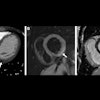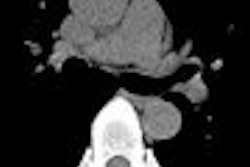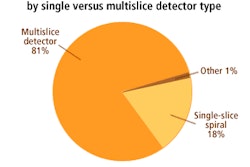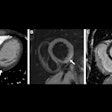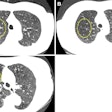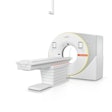CHICAGO - Substantial variation in patient radiation dose can occur during cardiac CT angiography (CTA) studies at different sites around the world, researchers said this week at the 2008 American College of Cardiology (ACC) meeting. The researchers added that the vast majority of CT sites are not using recently released techniques to reduce radiation dose.
"The exposure to ionizing radiation associated with cardiac CT angiography has raised serious concerns," said Dr. Jörg Hausleiter, an associate professor of medicine at the German Heart Centre in Munich. "The development and evaluation of additional dose-saving algorithms are needed for the widespread use of this promising cardiac CT methodology."
Hausleiter reported the findings of the International Prospective Multicenter Study on Radiation Dose Estimates of Cardiac CT Angiography in Daily Practice (PROTECTION I), a prospective, international, industry-independent, multicenter study that investigated the magnitude of cardiac CTA radiation dose estimates and the efficacy of dose-saving algorithms in daily practice.
The researchers received reports from 44 institutions that provided image data and information on scanning protocols for all consecutive cardiac CT angiographies performed during a one-month period.
Hausleiter presented an analysis that included 1,729 cardiac CTA exams compiled through December 2007. Dose estimates and the efficacy of dose-saving algorithms, qualitative and quantitative data on image quality, and future potential dose-reduction techniques were determined by a central core lab. Radiation dose was estimated from the dose-length product multiplied by a conversion coefficient.
"In this study, we found that the main indication for cardiac CT angiography was the assessment of coronary arteries," Hausleiter said. About 84% of the scans were performed to assess the condition of those arteries. The mean scan length was 144 mm, with a CTDIvol of 65.9 mGy. However, the range of that mean was quite wide (± 69.3 mGy). The mean estimated radiation dose was 17.1 mSv ± 9.5 mSv.
Radiation dose estimates differed significantly between study sites, with mean doses ranging from 8.5 mSv to 43.8 mSv. Variations also resulted from different types of 64-slice systems (p < 0.0001).
The mean minimum dose was about 11.8 mSv; the mean maximum dose was 25.2 mSv. "ECG-correlated tube-current modulation was used in 82% of cardiac CT angiographies, and on average resulted in a significant 21% reduction of dose estimates," Hausleiter said.
Compared to 120-kVp tube current, the use of 100 kVp yielded a significant dose savings of 51%. And compared to spiral data acquisition, the use of sequential scan algorithms reduced the estimated dose by 67%. However, both of these dose-saving measures were used infrequently -- in just 6% (100 kVp) and 2% (sequential scanning) of all cardiac CT angiographies.
"Cardiac CT angiography is associated with a considerable radiation exposure, which differs significantly between study sites and CT systems," Hausleiter said. "Worldwide educational efforts are needed to ensure the uniform consequent use of dose-saving algorithms."
By Edward Susman
AuntMinnie.com contributing writer
April 2, 2008
Related Reading
Prospective gating drops cardiac CT radiation dose, March 10, 2008
New studies examine CR, CT radiation dose, March 9, 2008
Dose studies delve into coronary CTA, March 8, 2008
Low-dose coronary CTA diagnoses most patients, November 28, 2007
Radiation dose slashed in 64-slice coronary CTA, February 15, 2007
Copyright © 2008 AuntMinnie.com
